How to determine the size of a septic tank and soak pit
In this post you are going to learn how to determine size of a septic tank and soak pit and how you can use this concept to determine the correct dimensions for your septic tank and its soak pit depending on the number of users that you have
PUBLIC HEALTH ENGINEERING
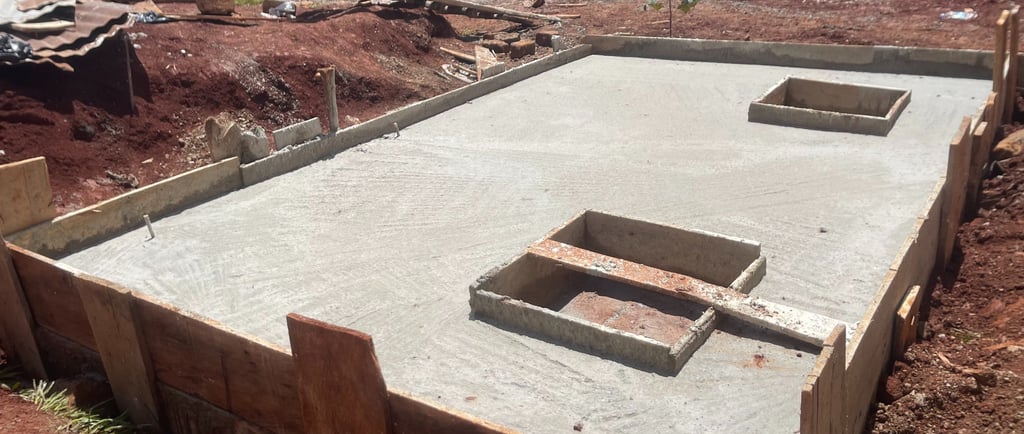

How to determine the size of a septic tank and soak pit
Table of contents
Core concept
What is a septic tank
3. How do you determine the size of a septic system
What is a soak pit?
Important considerations
Core concept
In building and construction, knowing how to determine the size of a septic tank and size of soak pit depending on the number of users is very important. One of the most important concepts that every civil engineer, builder or mason, quantity surveyor, or even a do-it-yourself (DIY) individual must know is understanding how septic tanks work and how to determine their safe sizes. This is simply because almost every building on earth must have a septic tank with its soakaway.
Let me describe for you what they mean, why they are vital and how you can determine the size of each depending on the number of users that you have
What is a septic tank?
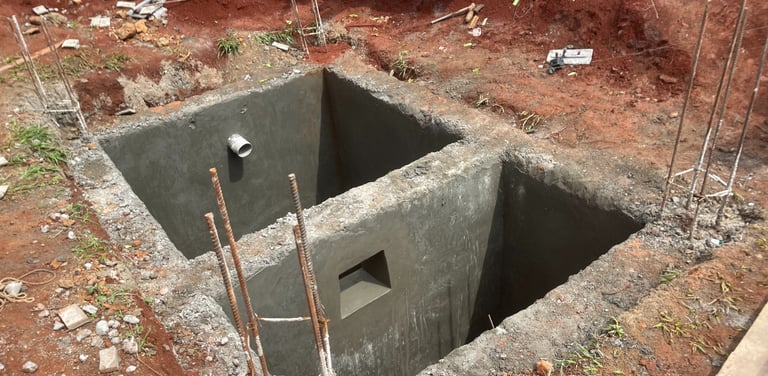

A septic tank system is part of the plumbing system that takes away waste water and sewage from your house and purifies it back into the groundwater system
How does a septic tank work?
Sewage from the house enters the septic tank through the inlet pipe; bacteria grows naturally inside the septic tank to break down solid sewage into liquid sewage. When the liquid sewage reaches the level of the outlet pipe, it flows to the soak pit to be treated back into the groundwater system. The process continues like that every time you use your toilet.
What is a soak pit?
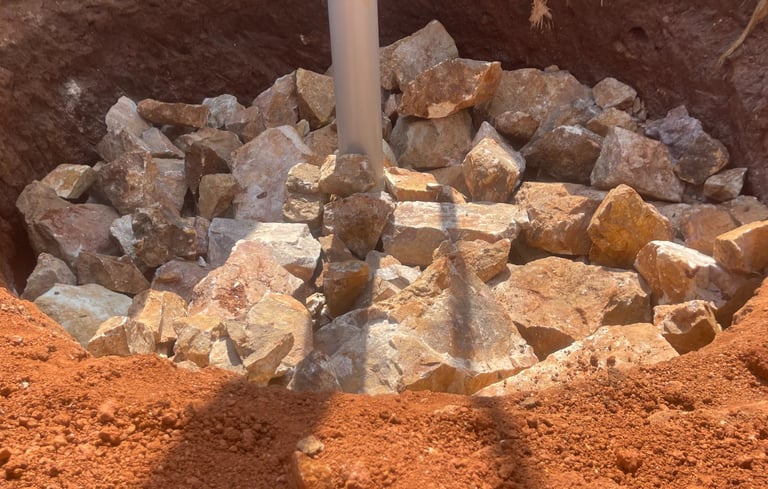

A soak pit is an underground chamber usually filled with hardcore or stones that allows wastewater from houses to soak away slowly back into the groundwater system
How do you determine the size of a septic system?
To determine the size of a septic tank, you have to consider different factors
1. The number of people or users intended to use the septic tank
The daily water usage for each user
A septic tank usually retains water for 2–3 days before it goes to the soak pit or drain field
Considering that each user uses 100-200 litres per day
We are going to use 200 litres to be on a safer side, and also consider 3 days as the retention time for water in the septic tank
Therefore
Tank size = daily water usage (litres) x retention (days)
Considering that the apartment below has 10 users and each user consumes 200 daily, 2000 litres a day
Tank size = 2000 l x 3 days
Recommended tank size therefore should accommodate at least 6000 litres to be safe
How to Determine the Dimensions of a Septic Tank Based on Required Volume
Imagine You Have to Fill a Box with Water
Let’s say you need to build a big box (which is your septic tank) that can hold 6000 litres of water. You want to know how wide and how tall the box should be.
Convert litres to Cubic Meters
Because we measure space in metres when building, let’s change litres to metres.
Since
1 cubic metre = 1000 litres.
then:
6000 litres = 6000 ÷ 1000 = 6 cubic meters
The septic tank has 3 sides: length, width, and height. Considering that the height of the septic tank is 3m depth
Volume = Length x width x height
6 = Length x Width x 3m
Think of the Box Shape
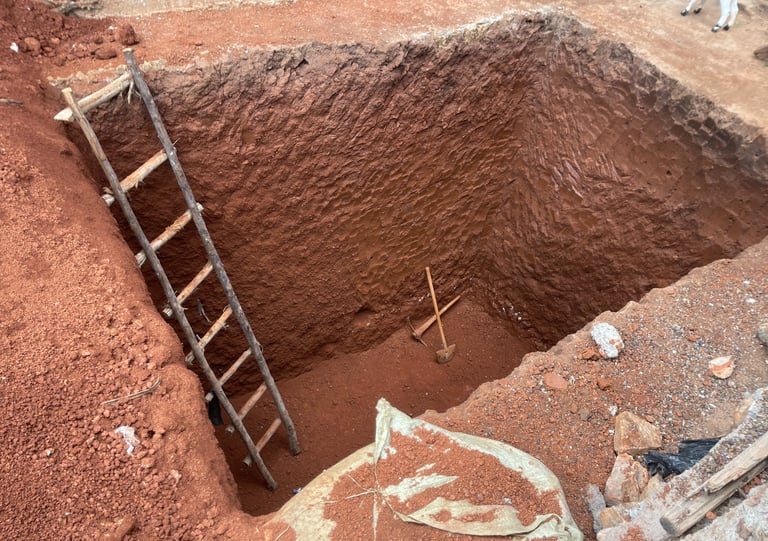

Let’s say the box is like this:
The length is twice as long as the width (that’s a common septic tank shape)
You want to figure out the width and height
Let’s assume the height is 2 meters
Use a Little Magic Math
Volume = length x width x height
6 = 2 × Width × Width × 2
Width in this case = 1.22m
1.22 meters (width)
Final Dimensions:
Width = 1.22 meters
Length = 2 × 1.22 = 2.44 meters
Height = 2 meters
This will hold exactly 6000 litres
The above dimensions are safe and only cover the internal distance size of the septic tank excluding the walls, so you have to excavate a larger pit.
Add extra 900mm on each dimension as space going to be covered by the walls and plaster and then for the depth, the 900mm will act as the measurement to compensate for the space we leave above the water level in the septic tank for scum (300mm) and also the concrete we cast at the bottom of the pit
As a round figure I normally add 900mm for all dimensions
So the final dimensions for the pit will be
Width 2.12 metres
Length 3.340m
Height as 2.9m
As a civil engineer with experience in septic tanks, I believe the above measurements are safe for 10 users. you can click here to see how we build a septic tank the correct way
You can use the same procedure to find out the the number of users that you have
Once you have the dimensions for the septic tank, the next step is to find out the dimensions for the soak pit
How to determine the size of a soak pit
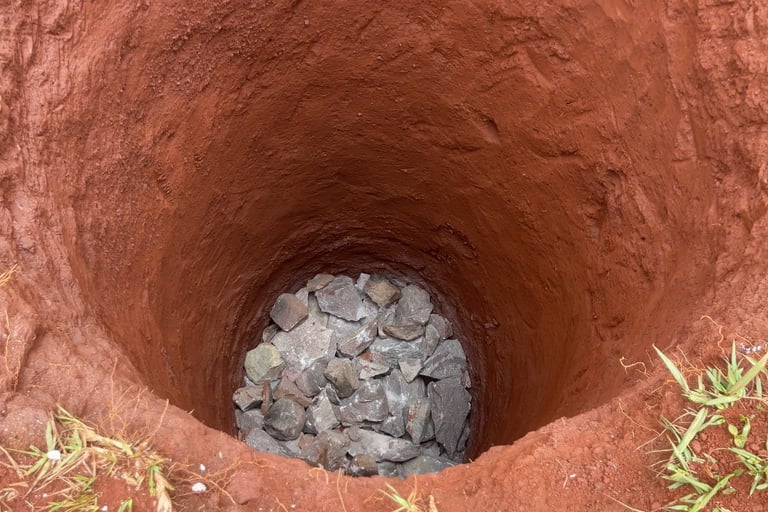

To determine the size of a soak pit, you have to consider majorly three factors
1. Daily water usage for each user
2. Soil percolation rate (how quickly wastewater will seep into the ground, measured in hours)
3. Local regulations
Considering that
I) Each user uses maximum 200 litres a day
II) The soil percolation rate is 48 hours
III) Local regulations – don’t want it so deep to avoid interacting with the water table
Considering that we are building a cylindrical soak pit or circular
Formula for soak pit Volume V
Volume of the soak pit V = Wastewater flow per day W / Percolation rate P
Where
V = Volume of the soak pit in cubic metres
W = Waste water flow per day in cubic metres
P = Percolation rate of soil per day in metres
Step 1: Determine wastewater flow W
W = N x U
Where
W = Water flow cubic metres
N = Number of users
U = Water generated per person per day
Step 2: Determine Percolation rate P
It depends on the area where you are living; usually the rate at which water can seep into the soil is usually
Clay soil: P = 5m per day
Loam soil: P = 20m per day
Sandy soil: P = 50m per day
Step 3: Calculate the required soak pit volume (V).
V = (N x U) U)/ P
For example for 200 users
With each user consuming 200 (0.2 cubic metres) a day and the soil percolation rate is 5 metres, the least rate per day
Wastewater flow
W = 200 x 0.2 = 40 cubic metres per day
V = 40/5
V = 8 cubic metres
8 x 2 days, the times it takes for water to seep into the ground
= 16 cubic metres
Meaning the soak pit should have a volume of 16 cubic metres
Step 4: Convert this volume into dimensions.
At this point it’s very easy now,
Since we chose a cylindrical shape
V = π r² H
Here you choose the depth you want or radius or diameter depending on the space available in your compound
Let’s say
I choose 2-metres radius of the pit
V = π r² H
Consider π as 3.14
We already have Volume as 8 cubic metres
16 = 3.14 x (2)² x H
Considering that the soak pit has a cylindrical shape
V = π r² H
Where
V is the Volume of the soak pit
r is the radius of the pit
H is the height or depth of the pit and
π is a constant
Let’s re-arrange to find the depth of the soak pit
H = (Volume ÷ π r²) x 2 days since percolation takes 2 days
Height of the soak pit = (Number of users x volume of water used by each user per day x the 2 days for percolation) ÷ π r²
H = (200 x 0.2 x 2) ÷ π r²
Consider π to is 3.14
And r as the radius of the pit
Let’s take radius as 2.5 metres, meaning its diameter is 5 metres
H = (200 x 0.2 x 2) ÷ (3.14 x 2.5²)
H = 4.1 metres
In summary, you need a soak pit with minimum
5 metres diameter and 4.1 metres deep
Or
3 metres diameter and 11.3 metres deep
Or
4 metres diameter and 6.4 metres depth
Any of the above measurements will work since you can convert any volume into dimensions
Important considerations
1. Ensure that the depth of the soak pit is at least 300mm deeper than the depth of the septic tank. Example 1
Meaning let’s say the septic tank is 3.3m deep; the soak pit must be at least 3.6m deep
Example 2
Let's say the septic tank is 2.5m deep; the soak pit should be at least 2.8m deep. You can read a detailed version of how to build a septic tank from start to finish. Click this text here